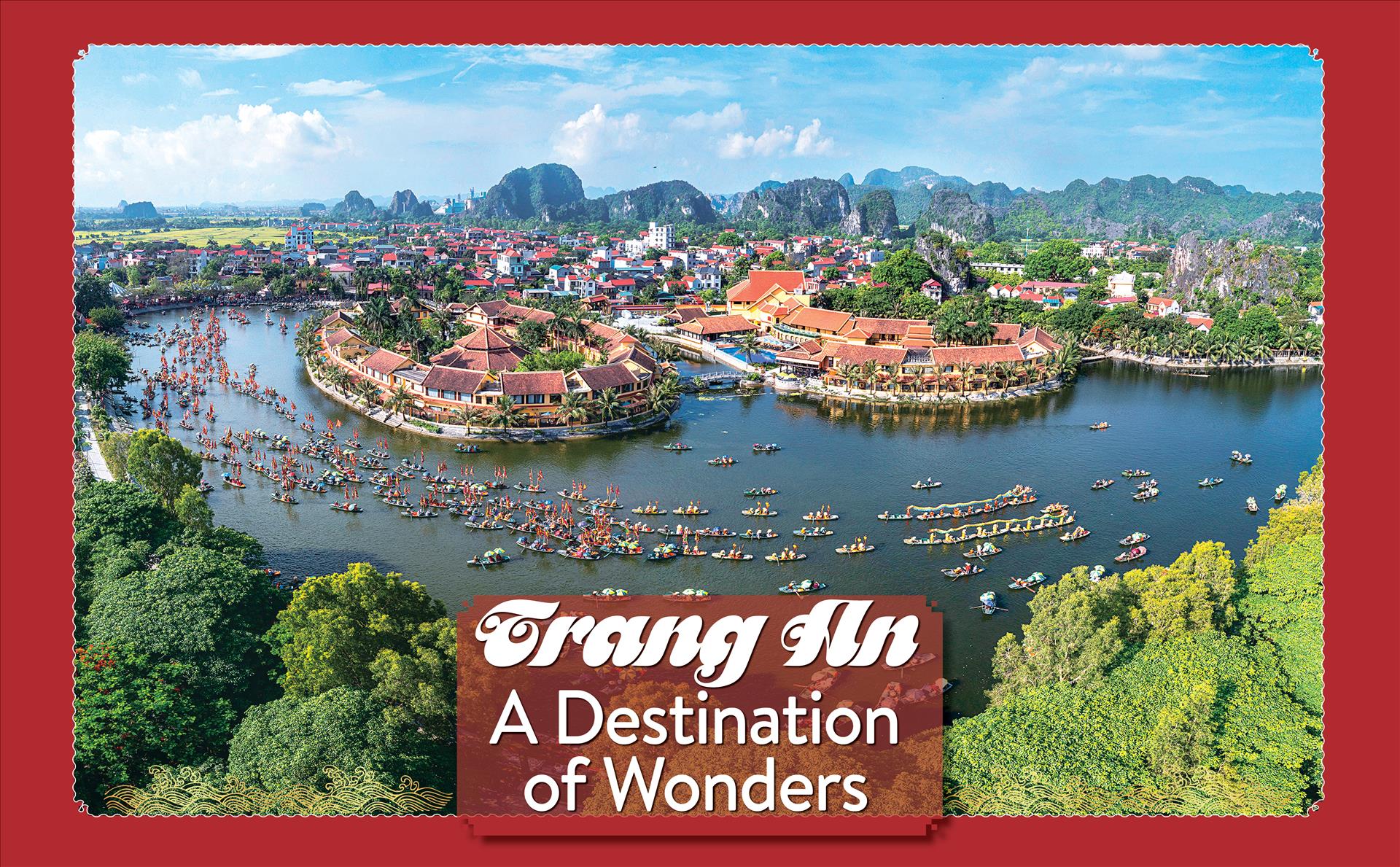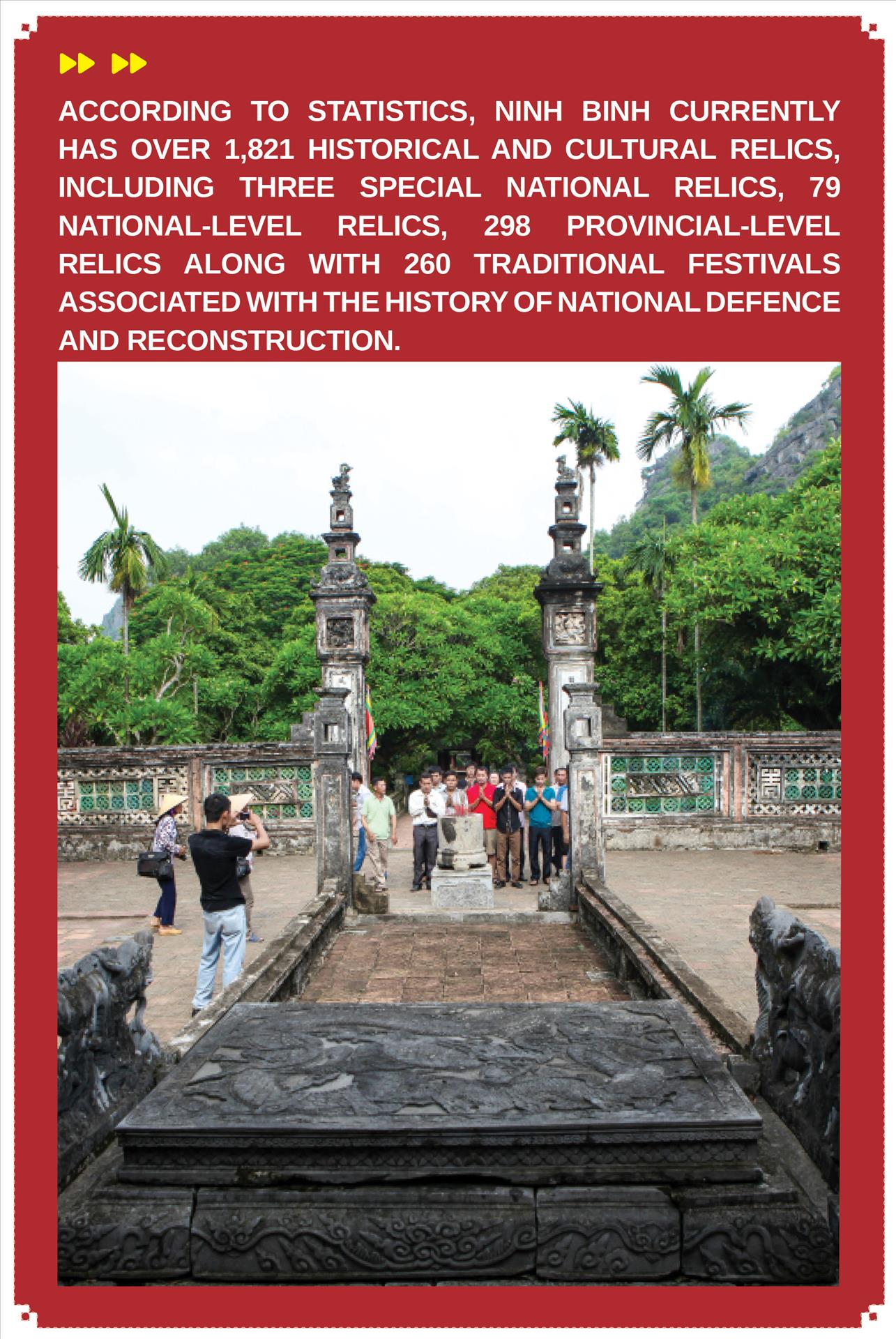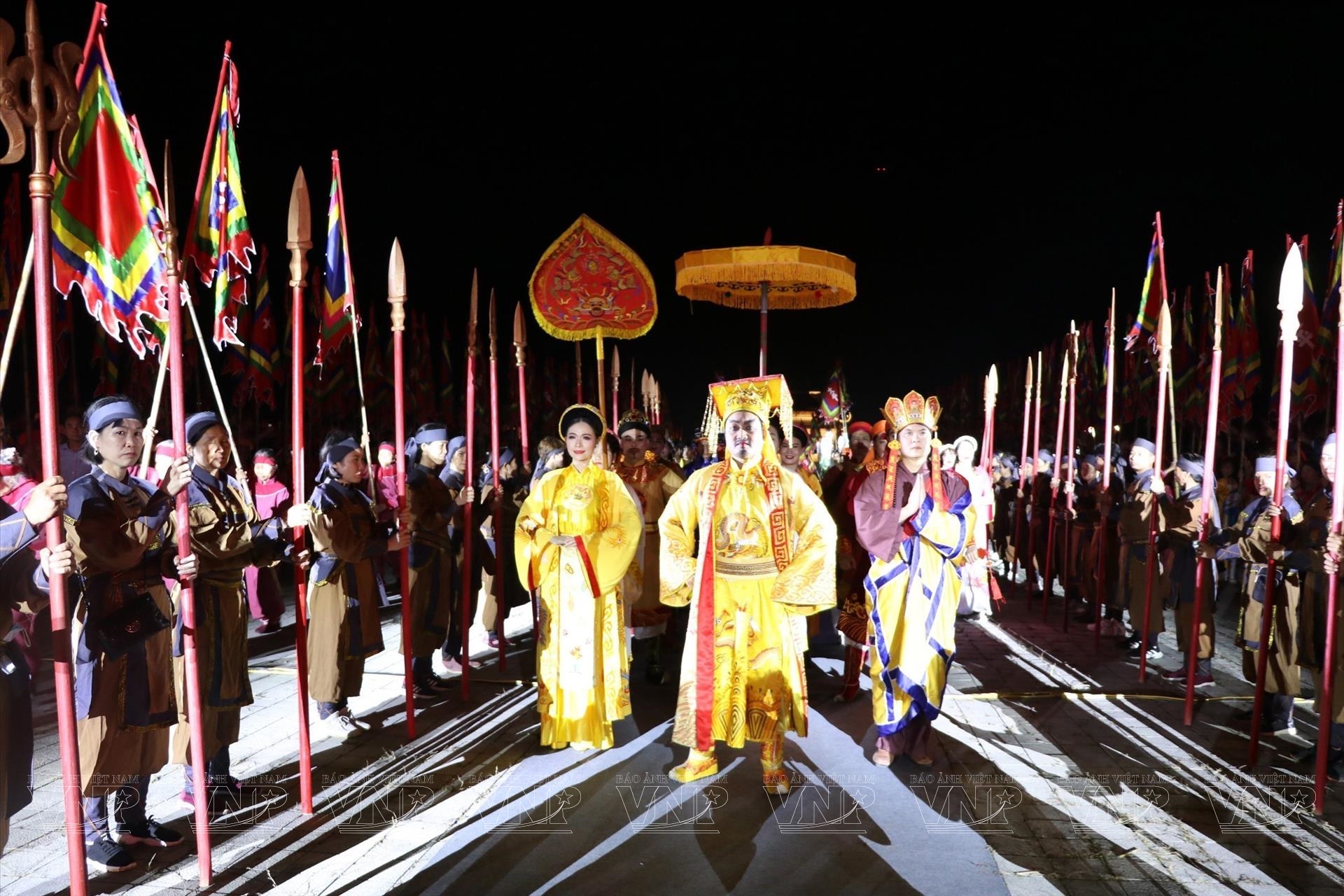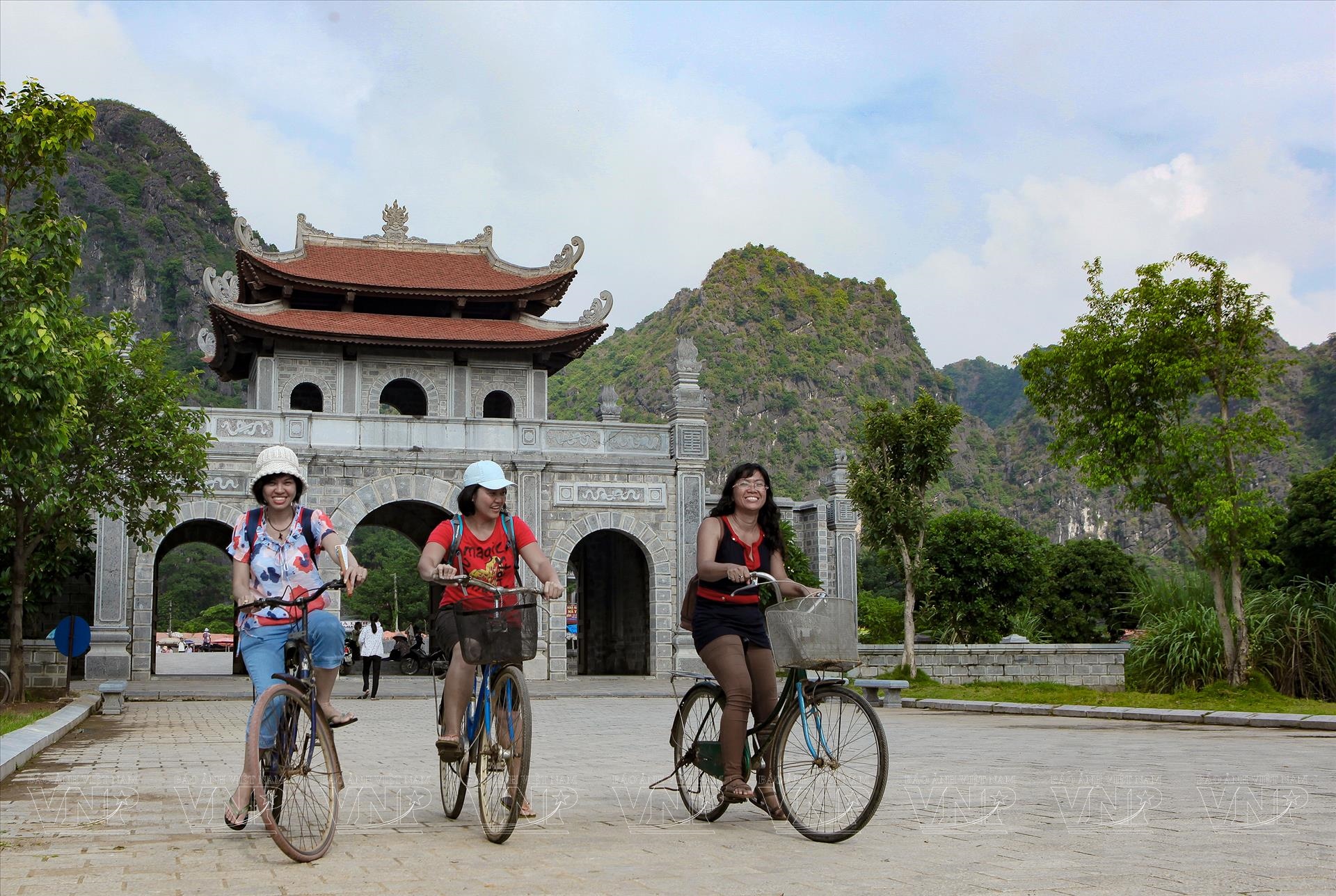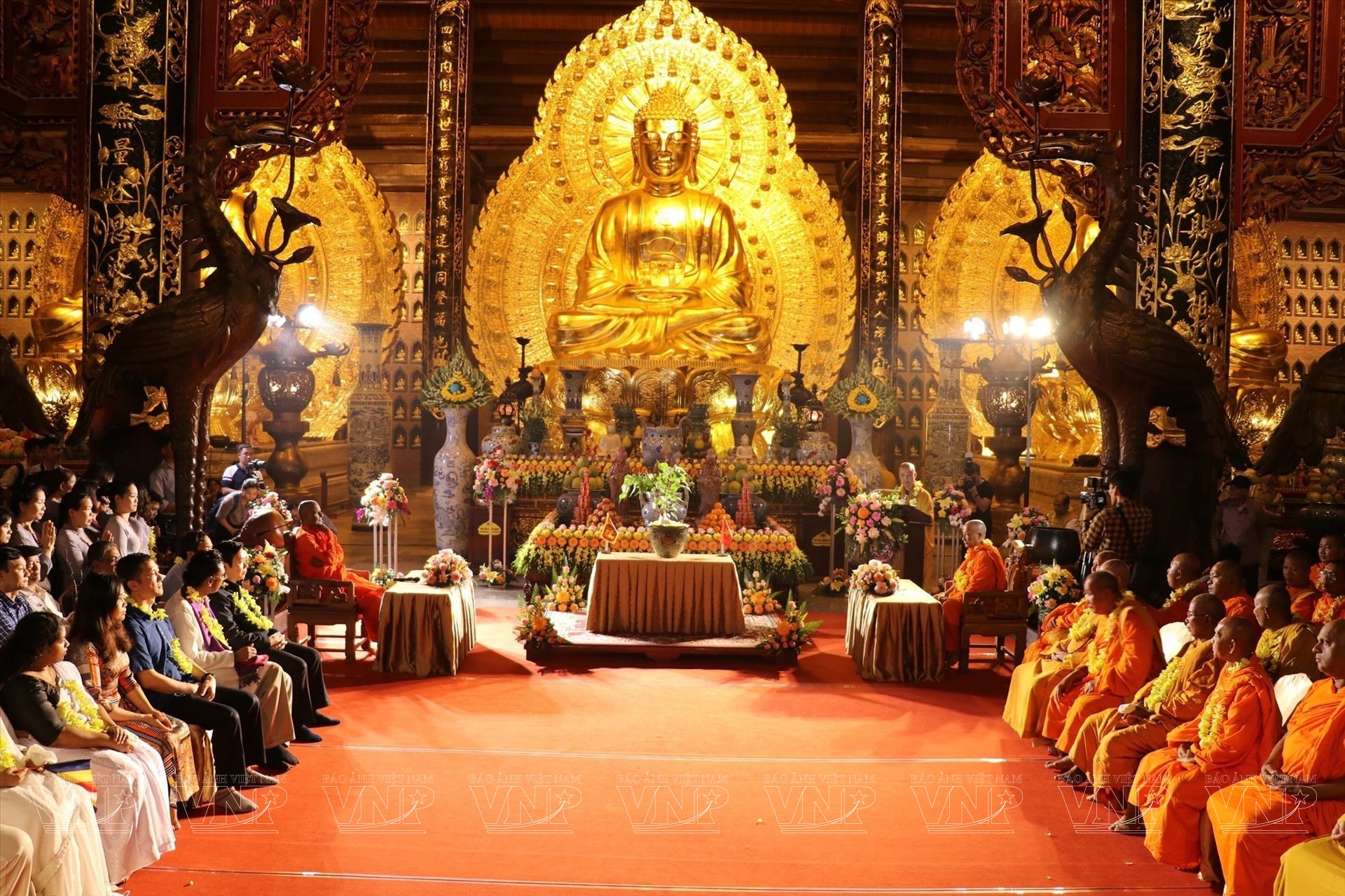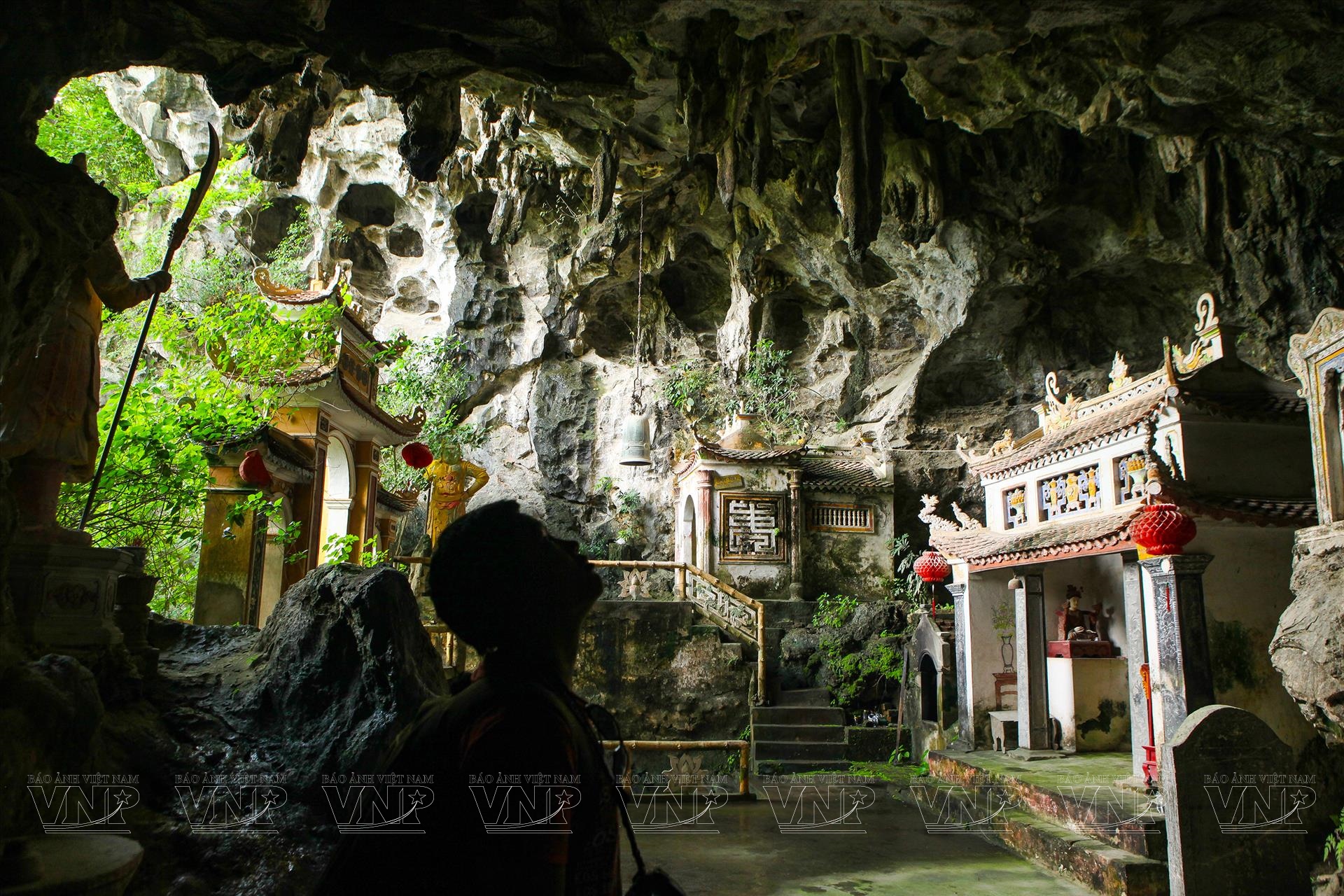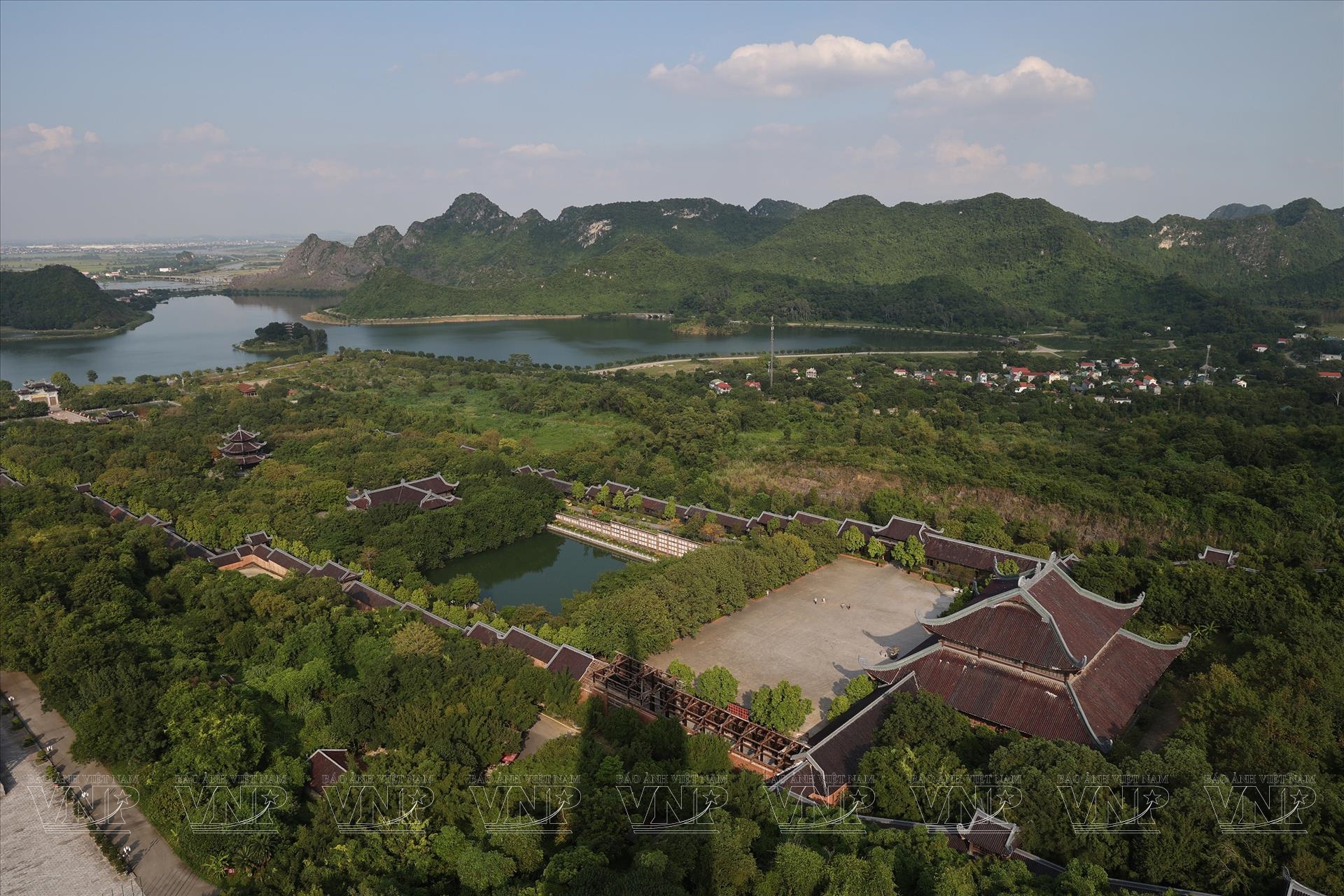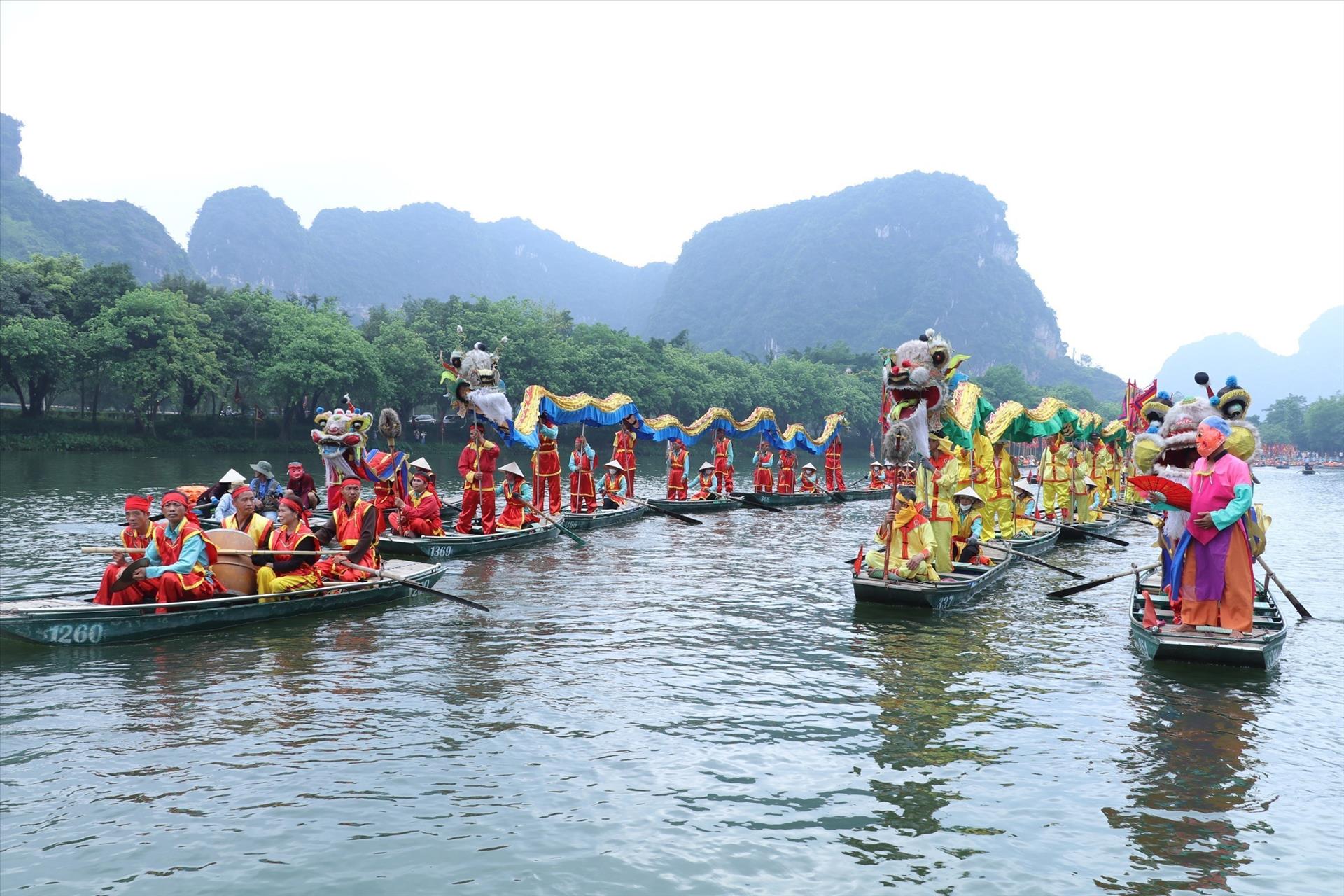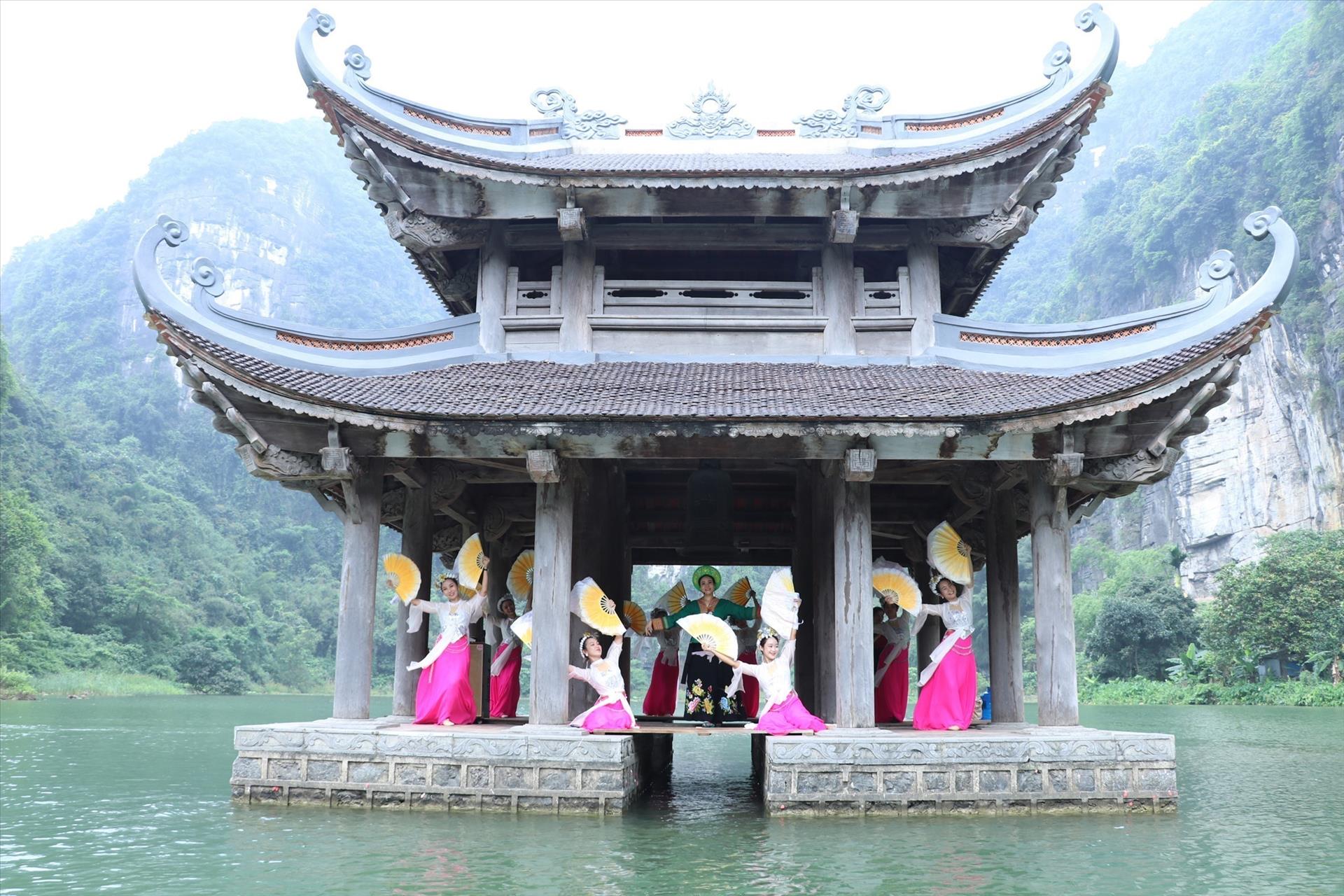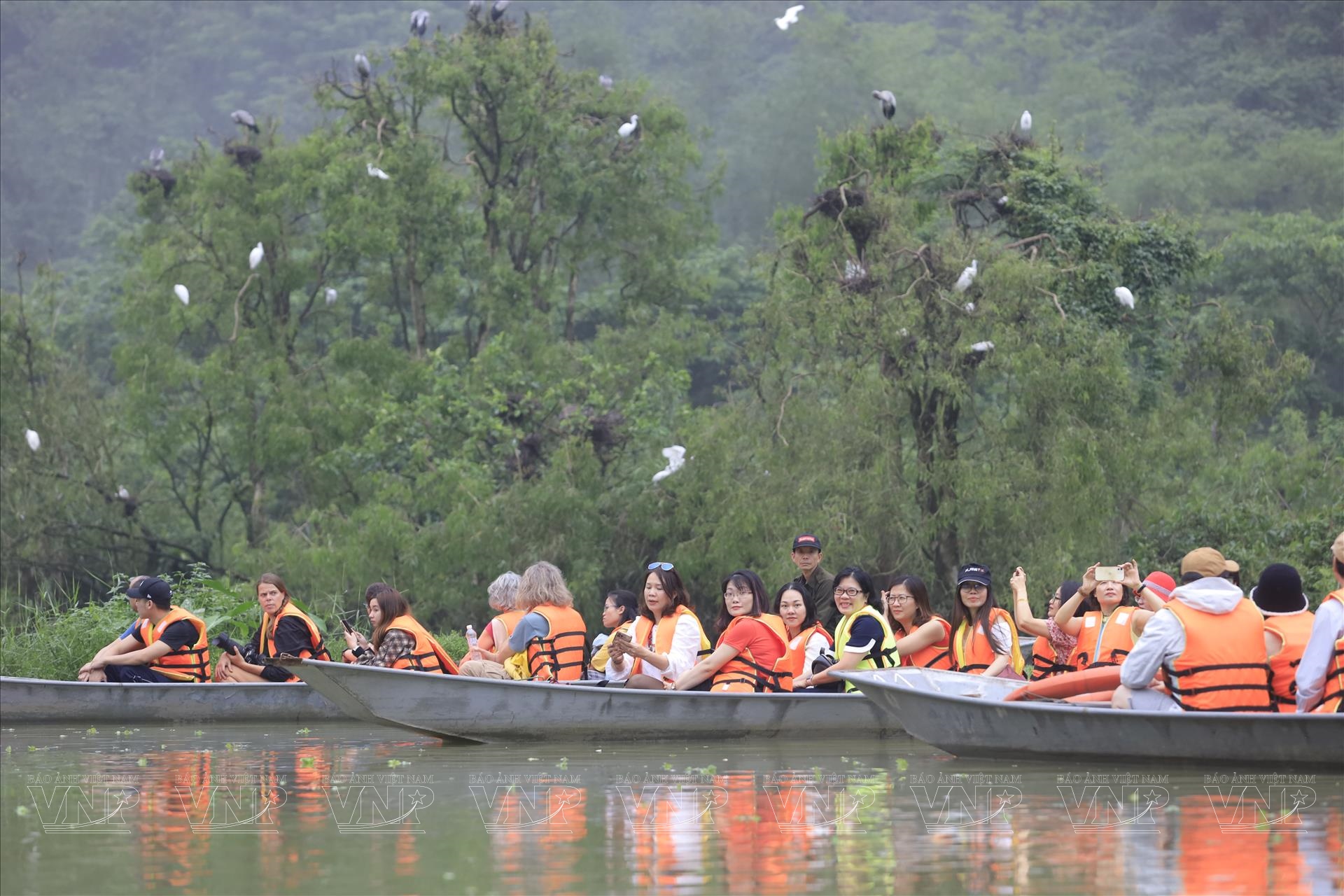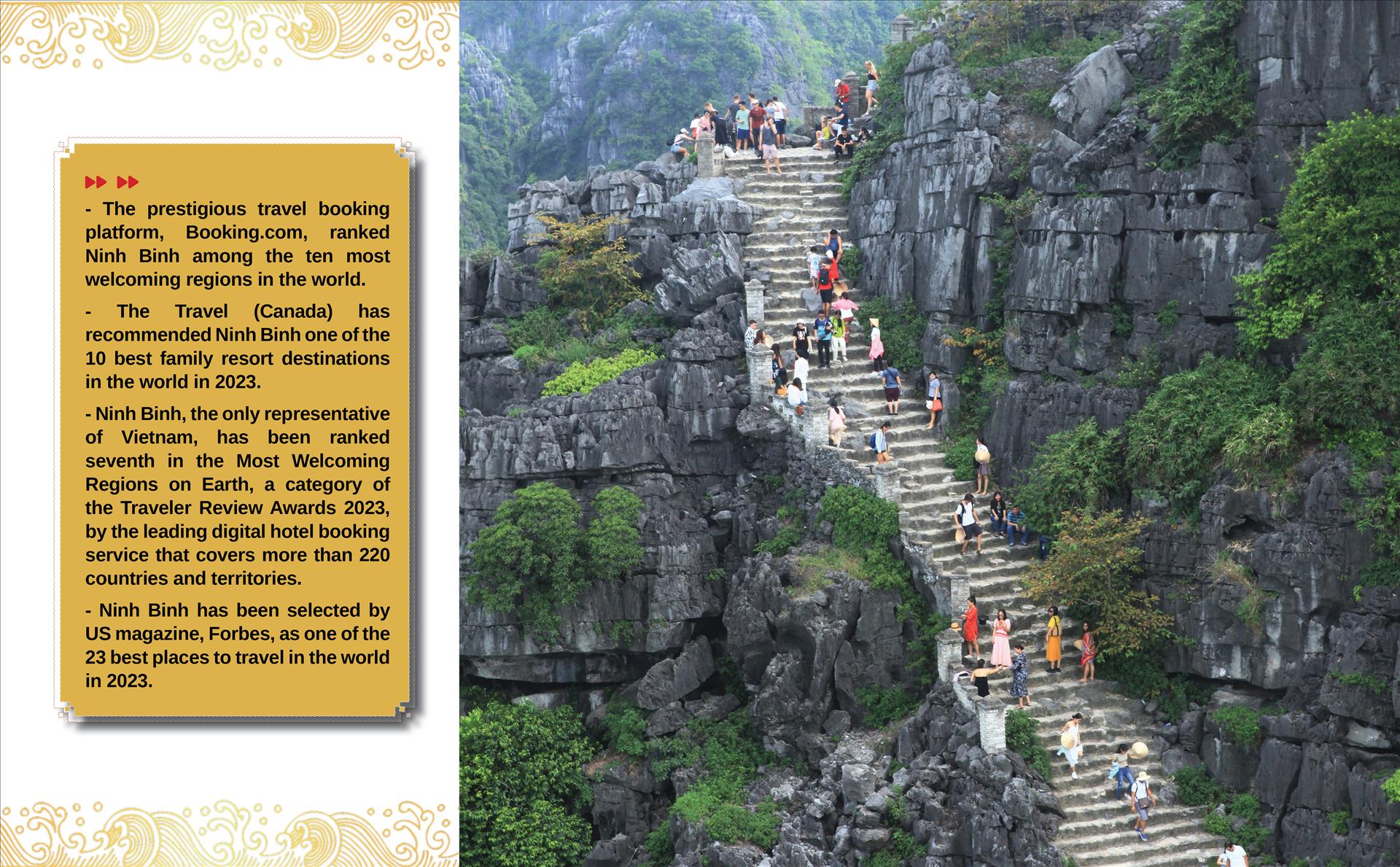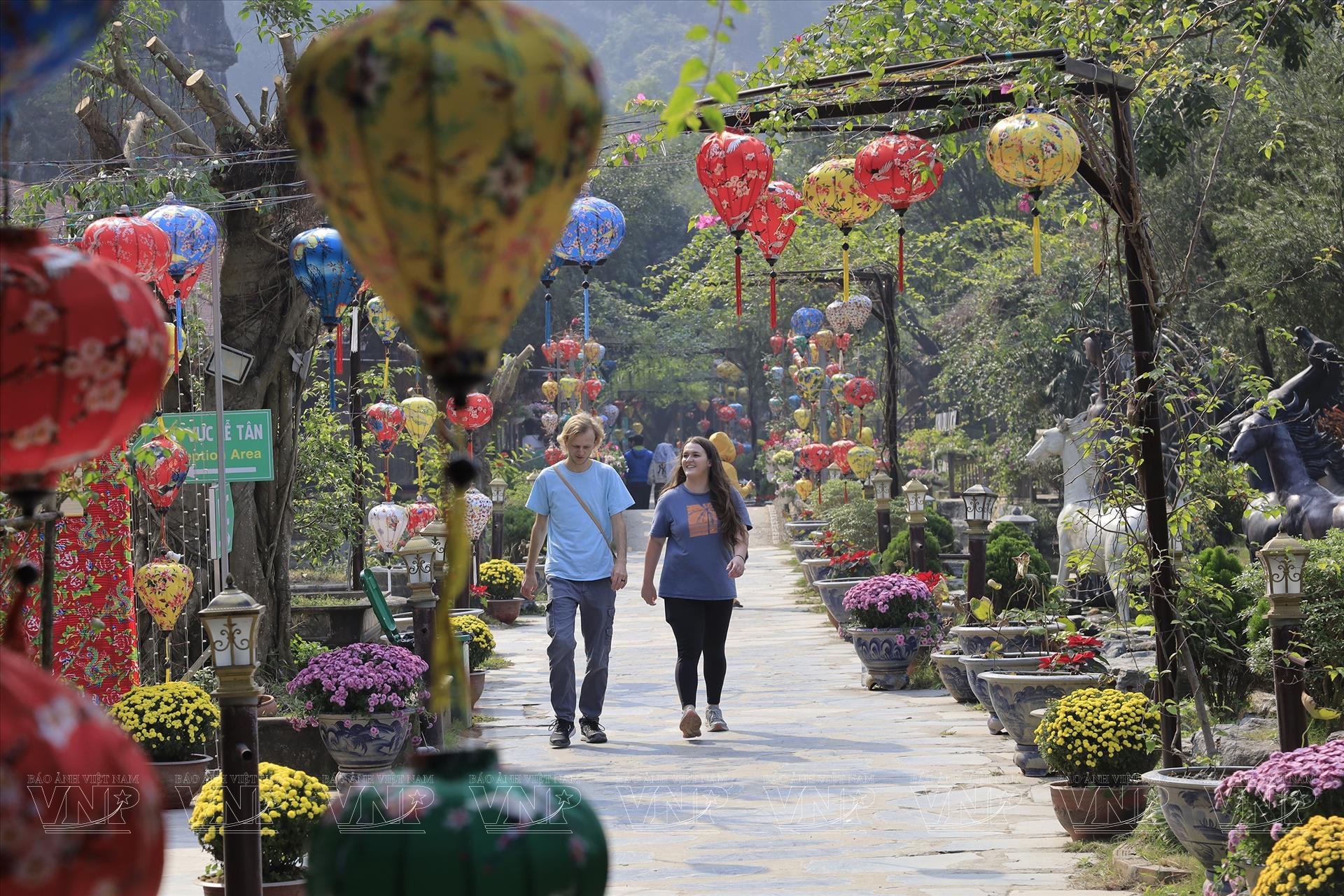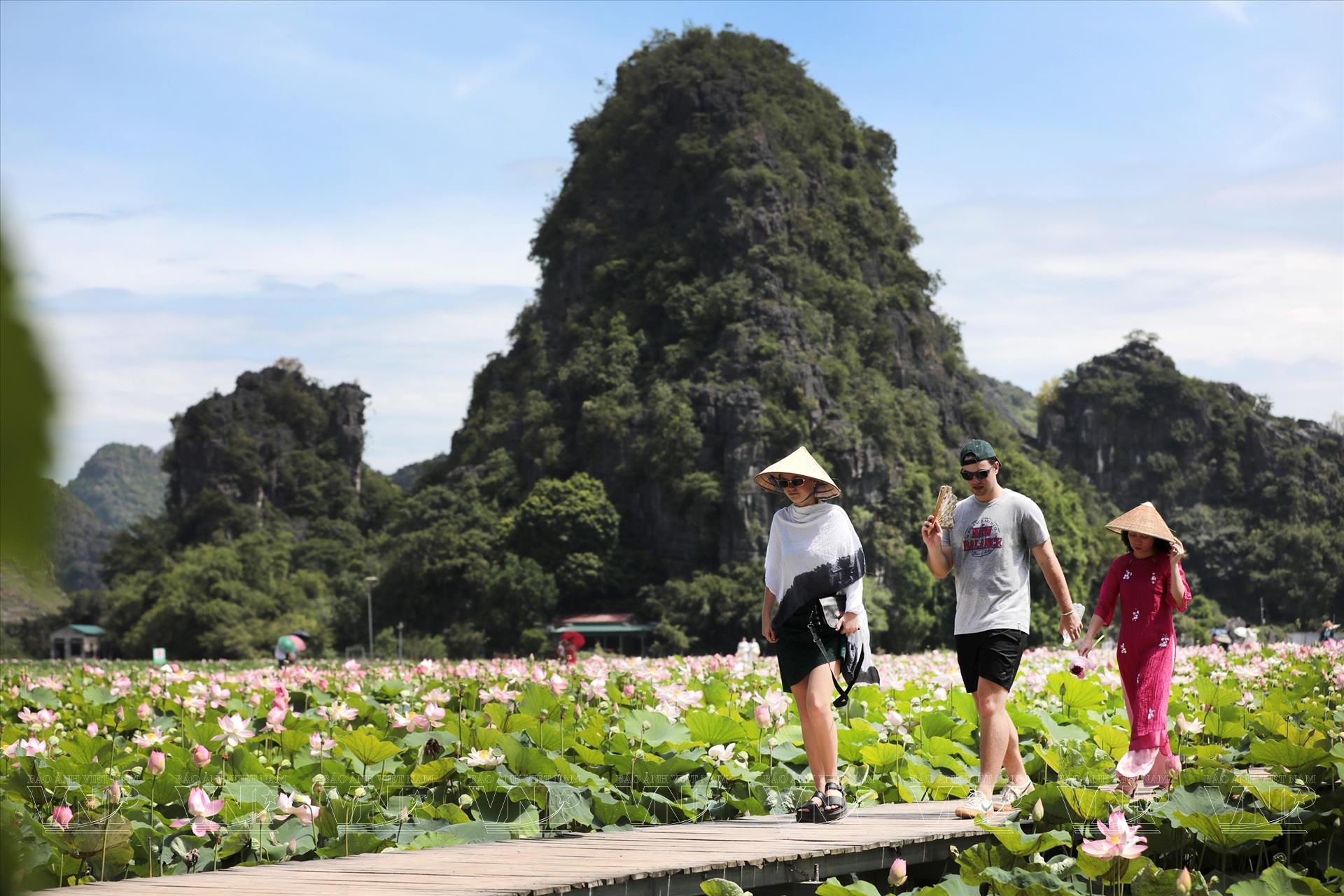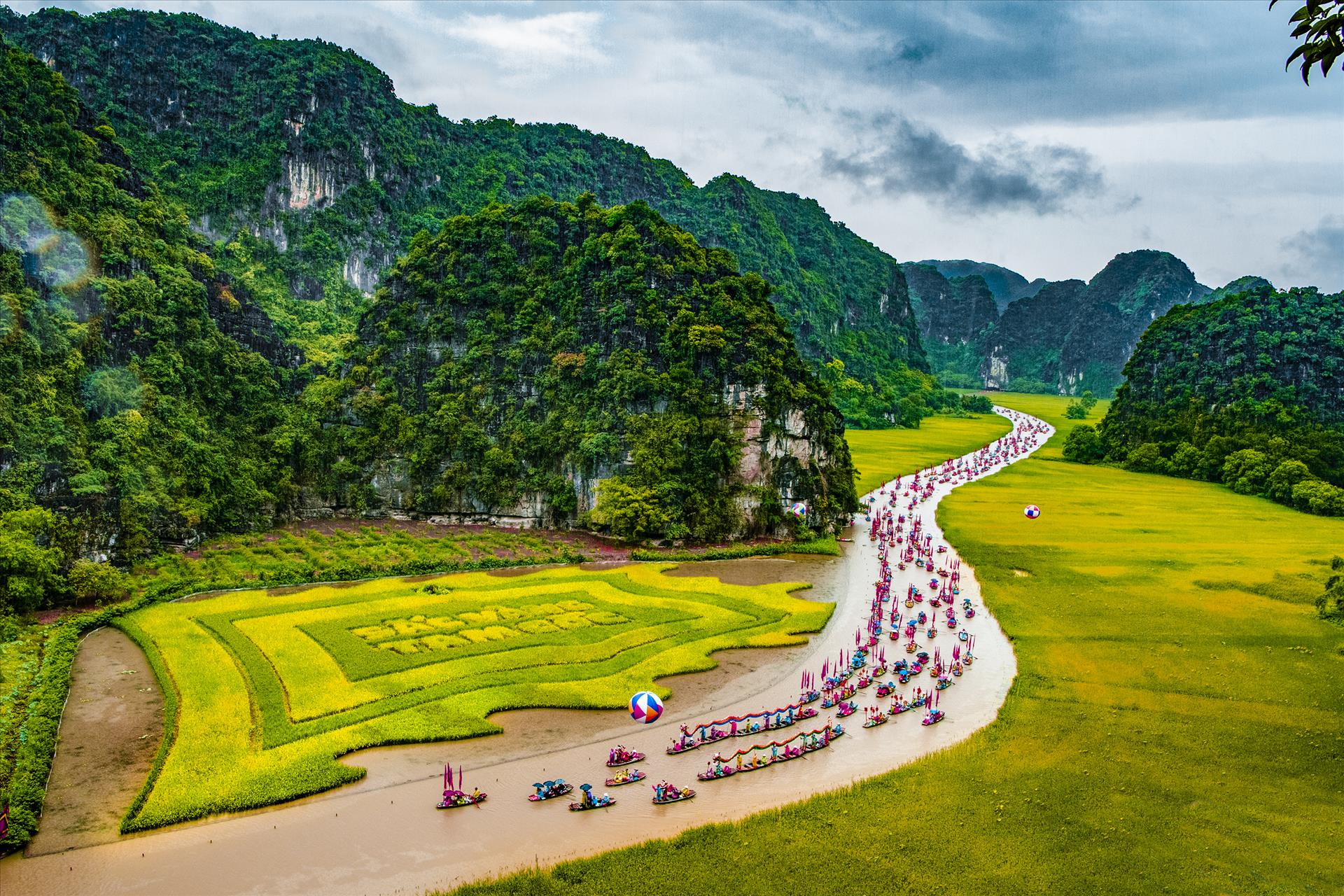Trang An, A Destination of Wonders

The land of Ninh Binh is surrounded by ranges of overlapping magnificent limestone mountains, resembling strong fortress walls. More than 30 thousand years ago, Ninh Binh was once the residential area of prehistoric people.
In the heart of this land lies Hoa Lu, also known as "Flowers and Reeds", which was chosen as the capital city of three dynasties of Dinh, Le and Ly, from 968-1010.
As the political, economic, military, cultural and religious center of the nation which witnessed many ups and downs and significant events connected to the nation’s fate through the long history of over one thousand years, this ancient capital has become a symbol of the nation's spirit, with its numerous pagodas, mausoleums, temples, and traces of the ancient capital.
Built in Truong Yen Commune, the center of the Eastern Citadel of Hoa Lu, the temple of King Dinh Tien Hoang boasts an ideal location in terms of feng shui. It faces Ma Yen Mountain, where the tomb of King Dinh Bo Linh is located. The temple was constructed during the Ly Dynasty in the architectural style of "noi cong ngoai quoc," which consists of two long corridors connecting the front ancestral house with the rear worship house.
As one of the country's most unique architectural works built in the 17th century, the temple of King Dinh Tien Hoang is a complex that consists of majestic structures. The temple also houses many valuable antiques, such as a pair of flanking elephants and two royal stone beds in the dragon yard, which were carved entirely from monolithic stone with delicate carvings.
About 500m from the Dinh Temple, the temple dedicated to Kinh Le Dai Hanh was built in the 17th century on a small scale. It faces the central square of Hoa Lu and at its back, there is a water moat running around the foot of Dia Mountain to protect the ancient capital. Many traces of ancient architecture with skillfully carved patterns, sculptures, and even vestiges of the old palace are still maintained in the temple.
Besides the temples of King Dinh and King Le, there are thousands of temples and shrines with unique stone architecture worshiping the founders of the country and the heroes during the Dinh - Early Le dynasties.
They include the Thai Vi Temple - a famous temple dedicated to kings of the Tran Dynasty. The right side of the temple is Ngo Giang River and the left side is Coi Linh Mountain which is harmoniously combined to create the legend of the Tam Coc region known as "Ha Long Bay on Land".
Not only known as a sacred land with many temples and shrines, Trang An is also the cradle of Vietnamese Buddhism. Looking back on the history of the Ly Dynasty, famous Zen master Nguyen Minh Khong chose Bai Dinh as a place for his religious practice, built Bai Dinh Pagoda and performed rituals to save sentient beings, turning the Hoa Lu - Bai Dinh area into the Buddhist center of the country in the 10th century.
Thanks to the contribution of many generations of Vietnamese people, the Bai Dinh Pagoda spiritual area was built on a total area of 700ha in Gia Sinh Commune, Gia Vien District. The pagoda complex concludes many magnificent Buddhist architectural works which set a series of records.
The pagoda is the largest spiritual cultural center in Southeast Asia. It has the biggest gilt Bodhisattva Avalokitesvara statue in Asia, the longest corridor of stone Arhat statues and the tallest sputa (Bao thap) in Asia.
One of the must-see destinations in Ninh Binh is Bich Dong Pagoda in Dam Khe Trong Village, Ninh Hai Commune, Hoa Lu District, which is 15km from Bai Dinh Pagoda to the north. It is praised as "The second most beautiful cave in the South". The ancient architectural work hidden in lush trees look serene with a mysterious spiritual nuance.
The limestone mountains in Ninh Binh were formed by tectonic processes over 300 million years ago. These mountains have contributed to the creation of the Trang An Landscape Complex, which was recognized by UNESCO as a World Cultural and Natural Heritage site in 2014. Trang An is often referred to as "Ha Long Bay on land" due to its mesmerizing beauty. The complex is characterized by a system of limestone mountains in various shapes, reflecting into winding rivers and streams that connectcaves and wild valleys. The harmony of limestone, rivers, forests, and sky in Trang An creates a lively and captivating natural world. This place also preserves many flooded forest ecosystems, limestone mountain forests, archaeological sites, and unique historical and cultural relics.
Located in the Trang An Landscape Complex, the Tam Coc - Bich Dong Scenic Area is one of the most attractive destinations in Ninh Binh Province. Tam Coc means three caves, including Ca (first) cave, Hai (second) cave and Ba (third) cave. The place, with its beauty in each season, always attracts a large number of tourists.
The best place to enjoy the scenery of Tam Coc from above is Mua Cave. After climbing nearly 500 stone steps, tourists will be thrilled by the charming landscape, both wild and majestic, shaded by green trees and a softly winding river.
From Bich Dong Pagoda, following the road about 4km, visitors will arrive at Thung Nham - the sanctuary of birds.
Thung Nham Bird Garden is home to more than 400 bird species, mainly storks, egrets, teals, fire warblers and starlings and also some rare bird species listed in the Red Book. The beauty of Thung Nham is a blend of the majesty of rocky mountains and caves with diverse systems of valleys and green trees, making the scenery here even more spacious and dreamy, bringing tourists exciting and relaxing moments.
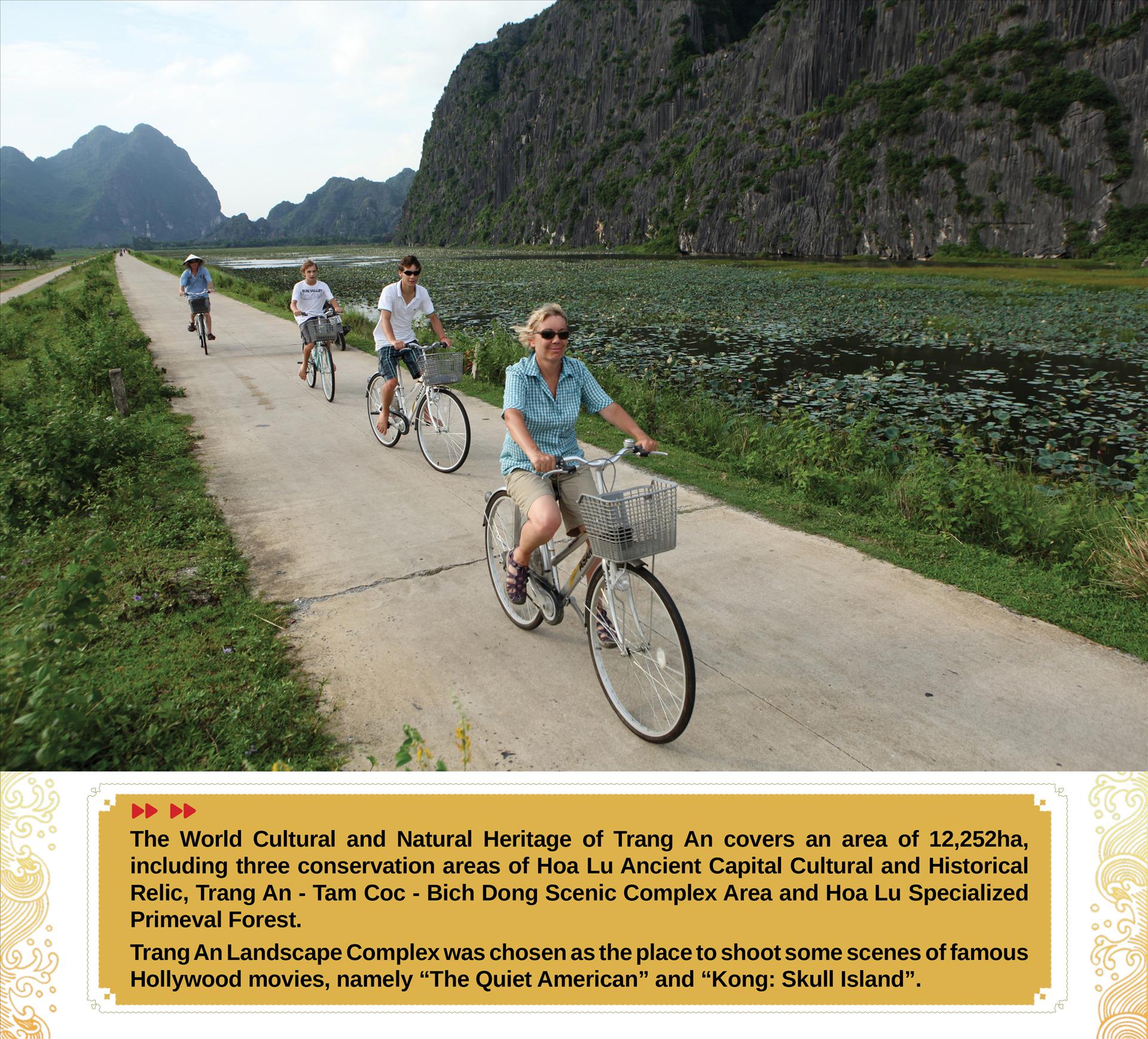
Reporter Toshiyuki Hayakawa (from Sekai Nippo newspaper, Tokyo - Japan) was extremely surprised when visiting Trang An. He said: "Rivers, limestone mountains, caves with sparkling stalactites, and ancient temples impress me. It is such a peaceful scene. After returning to Japan, I will write news articles to introduce these beautiful spots, the country and the people of Vietnam to Japanese people. I hope to have another opportunity to come back here again”.
Story: Ninh Duc Phuong, Thong Thien
Photos: VNP, Ninh Duc Phuong, Luu Trong Thang & Pham Quoc Dung
Translated by Hong Hanh
Designed by Trang Nhung
